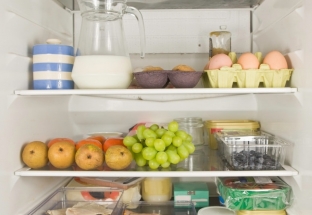What could be better than a noisy big company of relatives and friends to gather at the festive table. Hostesses spend long hours in the kitchen on the eve of the holidays, and are happy to cook kilograms of their favorite dishes for the whole family. But now the holiday ends, and there is often still a lot of food left. And the family eats festive dishes with great pleasure for several more days. During this period, there is a boom in food poisoning. Knowing the shelf life of products will help to avoid these unpleasant consequences.
Refrigerated shelf life: how to avoid poisoning
Everyone knows that if food products are stored improperly and for a long time, they become a favorable environment for the reproduction of pathogenic microorganisms. We used to think that a product unsuitable for human consumption can be easily identified by its smell and taste, but this is not entirely true. Some types of foodstuffs and ready-made meals can retain their good taste qualities for a long time, but at the same time already contain pathogenic microorganisms. Eating such foods inevitably leads to food poisoning, which can have extremely unpleasant and even dangerous consequences. Proper storage of products will help not only to avoid infectious diseases, but also to preserve as much as possible all the useful properties of the food consumed.
Product storage:
- food shelf life: how to store ready meals;
- storage of products that have not been heat treated;
- Symptoms and first aid for food poisoning.
Product shelf life: how to store prepared meals
Olivier, jellied fish and meat, smoked chicken and stewed mushrooms, salads generously seasoned with mayonnaise – these favorite dishes of all can be found on almost every holiday table, and they are perishable products. Long-term storage in the wrong conditions and the consumption of such ready-made meals leads to the fact that entire families enter the infectious diseases departments with signs of food poisoning. Ready meals can be on the festive table for no more than 6 hours, after this time room temperature makes them a favorable environment for the reproduction of microbes. Storage of products that were on the festive table is only permissible in the refrigerator at a temperature of from +4 to + 6°; for no more than 3 days.
Storage of products that have not been heat treatedIt is common to find other items in post-holiday refrigerators that were bought with a margin and not used to prepare ready-made meals. The storage of these types of products is permitted as follows:
- fresh meat and poultry – up to 3 days, fish – up to 2 days at temperatures from 0 to +8°;
- sausages and sausage products – up to 10 days at temperatures from 0 to +8°;
- salted fish – up to 7 days when temperature from 0 to +8°;
- fresh milk, sour cream, cottage cheese and cheeses – up to 3 days at temperatures from 0 to +8°;
- chicken eggs – up to 20 days at temperatures from 0 to + 8°.

Recognizing food poisoning is fairly simple. The first symptoms of the disease occur within a few hours after eating a spoiled product. First of all, there is a general weakness of the body and nausea, a little later symptoms such as vomiting, diarrhea, bloating and & nbsp; painful cramps in the stomach. When the first symptoms of a food infection appear, a person needs to rinse the stomach with warm boiled water or a weak solution of soda. Then you need to take enterosorbents, which tend to adsorb and remove toxins from the body. It is allowed to take painkillers and antidiarrheal drugs. If a person does not feel better after giving first aid, it is imperative to seek qualified medical help.






Add a comment